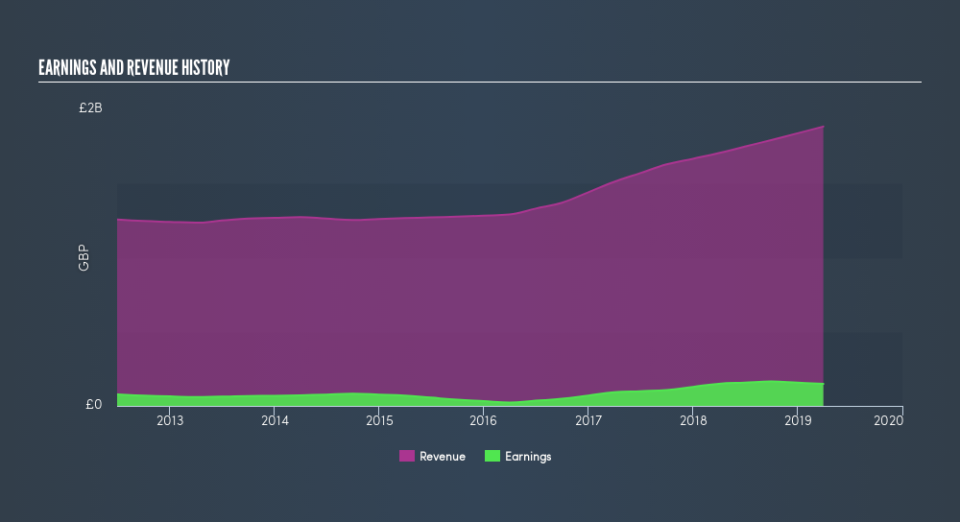Has Electrocomponents plc's (LON:ECM) Earnings Momentum Changed Recently?

Want to participate in a short research study? Help shape the future of investing tools and you could win a $250 gift card!
When Electrocomponents plc (LON:ECM) released its most recent earnings update (31 March 2019), I wanted to understand how these figures stacked up against its past performance. The two benchmarks I used were Electrocomponents's average earnings over the past couple of years, and its industry performance. These are useful yardsticks to help me gauge whether or not ECM actually performed well. Below is a quick commentary on how I see ECM has performed.
Check out our latest analysis for Electrocomponents
Commentary On ECM's Past Performance
ECM's trailing twelve-month earnings (from 31 March 2019) of UK£148m has declined by -1.0% compared to the previous year.
Furthermore, this one-year growth rate has been lower than its average earnings growth rate over the past 5 years of 24%, indicating the rate at which ECM is growing has slowed down. Why could this be happening? Well, let’s take a look at what’s occurring with margins and if the entire industry is facing the same headwind.
In terms of returns from investment, Electrocomponents has invested its equity funds well leading to a 25% return on equity (ROE), above the sensible minimum of 20%. Furthermore, its return on assets (ROA) of 11% exceeds the GB Electronic industry of 7.4%, indicating Electrocomponents has used its assets more efficiently. And finally, its return on capital (ROC), which also accounts for Electrocomponents’s debt level, has increased over the past 3 years from 12% to 22%.
What does this mean?
Electrocomponents's track record can be a valuable insight into its earnings performance, but it certainly doesn't tell the whole story. Companies that are profitable, but have capricious earnings, can have many factors influencing its business. You should continue to research Electrocomponents to get a better picture of the stock by looking at:
Future Outlook: What are well-informed industry analysts predicting for ECM’s future growth? Take a look at our free research report of analyst consensus for ECM’s outlook.
Financial Health: Are ECM’s operations financially sustainable? Balance sheets can be hard to analyze, which is why we’ve done it for you. Check out our financial health checks here.
Other High-Performing Stocks: Are there other stocks that provide better prospects with proven track records? Explore our free list of these great stocks here.
NB: Figures in this article are calculated using data from the trailing twelve months from 31 March 2019. This may not be consistent with full year annual report figures.
We aim to bring you long-term focused research analysis driven by fundamental data. Note that our analysis may not factor in the latest price-sensitive company announcements or qualitative material.
If you spot an error that warrants correction, please contact the editor at editorial-team@simplywallst.com. This article by Simply Wall St is general in nature. It does not constitute a recommendation to buy or sell any stock, and does not take account of your objectives, or your financial situation. Simply Wall St has no position in the stocks mentioned. Thank you for reading.

 Yahoo Finance
Yahoo Finance 
